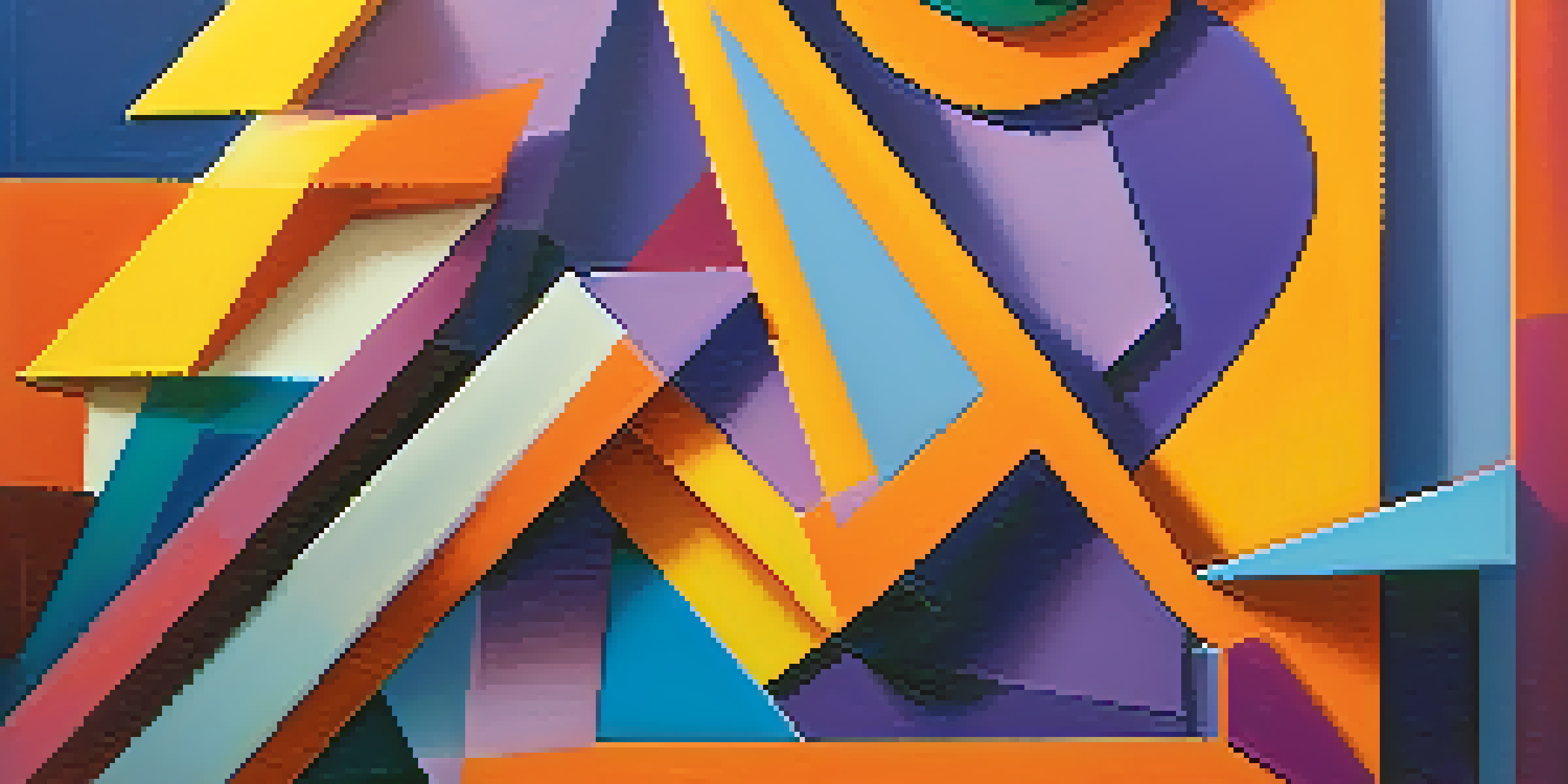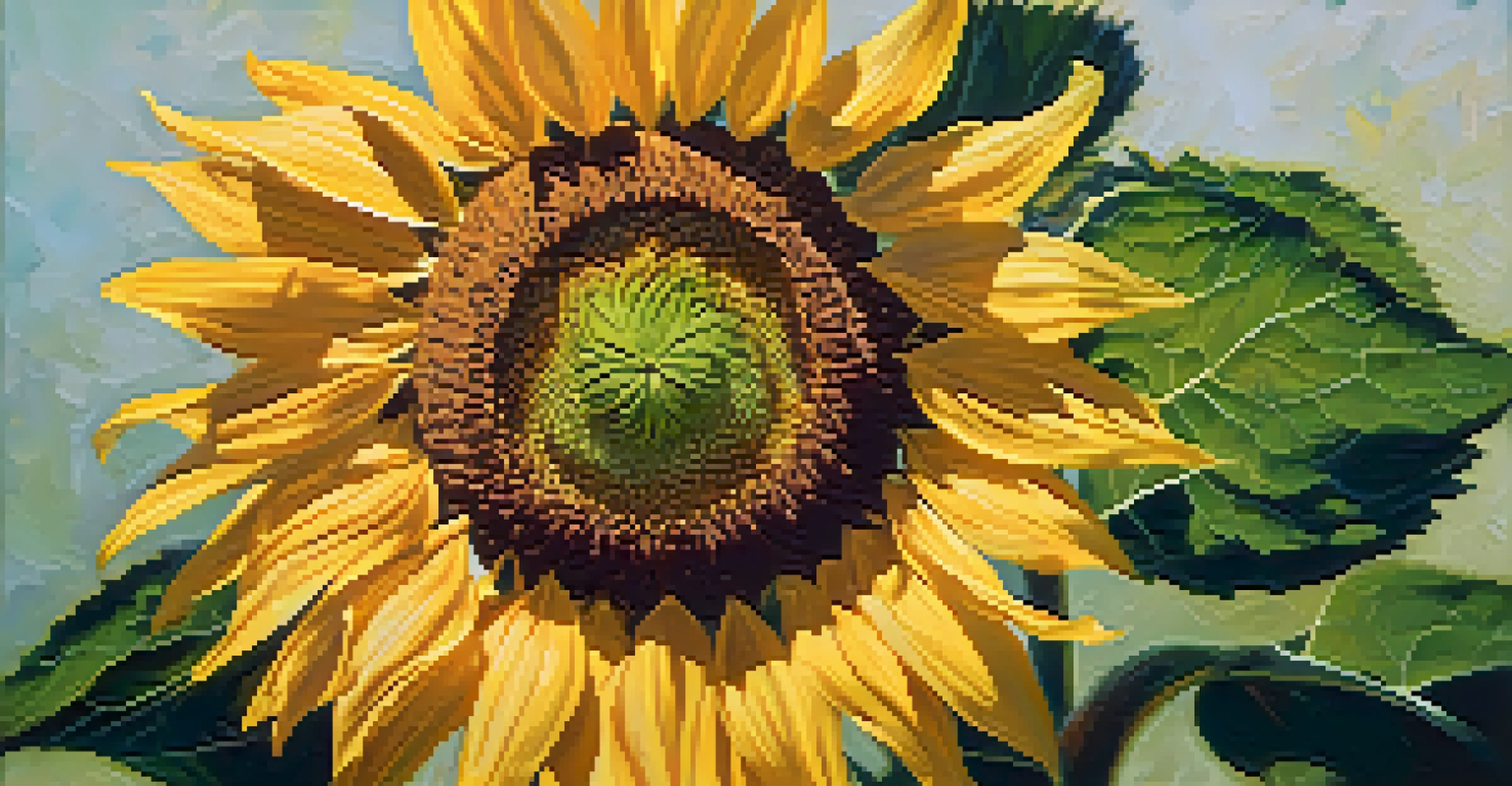Exploring Formalism: A Key Method in Art Criticism Today

Understanding Formalism in Art Criticism
Formalism is a method of art criticism that emphasizes the visual elements of artwork, such as color, line, shape, and texture. Rather than focusing on the narrative or emotional content of a piece, formalism invites viewers to appreciate how these elements come together to create meaning. This approach can be particularly useful for analyzing a wide range of artworks, from classical paintings to contemporary sculptures.
Art is not what you see, but what you make others see.
At its core, formalism encourages us to step back and examine the 'how' of art, rather than just the 'what'. By dissecting the composition, structure, and use of materials, critics can uncover deeper insights about the artist's intention and the work's impact. This method can also serve as a bridge between various art forms, allowing for comparisons that might not be evident through other critical lenses.
Related Resource
In today's diverse art scene, formalism remains a crucial tool for both critics and casual viewers alike. By fostering a greater appreciation for the aesthetic qualities of a work, this approach can enhance our overall understanding of art and its significance in culture. Ultimately, formalism helps us to engage with art on a more profound level.
The Historical Context of Formalism
Formalism as a concept has roots in the early 20th century, gaining prominence through movements like Russian Formalism and New Criticism. These movements sought to establish a more objective basis for evaluating art and literature, moving away from subjective interpretations based on personal feelings or historical context. This shift laid the groundwork for formalist approaches in art criticism that focus on intrinsic qualities.

Throughout the decades, formalism has evolved, influenced by various artistic styles and critical theories. For instance, the rise of abstract art challenged critics to find new ways to discuss artworks that didn’t adhere to traditional representational forms. In such cases, formalism provides a vital framework for understanding how the arrangement of shapes and colors can convey meaning, even in the absence of recognizable subjects.
Formalism Focuses on Visual Elements
This art criticism method emphasizes color, line, shape, and texture over narrative or emotional content.
Today, the historical development of formalism informs contemporary practices, as critics draw on past theories while adapting to new artistic trends. This ongoing dialogue between history and modernity allows for a richer exploration of art, encouraging us to appreciate both the legacy and the innovation present in today’s art world.
Key Principles of Formalism in Art Analysis
At its foundation, formalism is built on several key principles that guide art analysis. These include a focus on the elements of design, the arrangement of forms, and the use of color and light. Critics who adopt a formalist approach often start by closely examining these components, allowing them to understand how they interact to create a cohesive whole.
The job of the artist is to deepen the mystery.
Another crucial principle is the notion of autonomy in art, which posits that artwork should be considered in its own right, separate from external influences such as the artist's biography or historical context. This perspective empowers the viewer to engage directly with the artwork, fostering an appreciation for its intrinsic qualities. For instance, a formalist analysis of a painting might delve into how the brushstrokes and color palette evoke a sense of movement or emotion without needing to reference the artist's personal struggles.
Related Resource
Lastly, formalism encourages a subjective experience of art, where individual perceptions can vary based on the viewer's interpretation of the visual elements. This emphasis on personal engagement allows for a diverse range of responses, making art an ever-evolving conversation rather than a fixed narrative.
Formalism vs. Other Critical Approaches
While formalism is a powerful tool in art criticism, it stands in contrast to other approaches that prioritize context and content. For example, contextualism emphasizes the historical, social, and political factors that shape an artwork, seeking to understand its significance within a broader framework. This method often overlaps with formalism, but it diverges by placing greater importance on narrative and meaning derived from external influences.
Similarly, psychoanalytic criticism examines the psychological dimensions of art, delving into the subconscious motivations of the artist and the viewer. While formalism can touch upon emotional responses, it typically avoids deeper psychological interpretations, focusing instead on the visual aspects at play. This distinction highlights the unique strengths of formalism, particularly in its ability to foster an immediate appreciation for the artwork's aesthetic qualities.
Historical Roots and Evolution
Formalism originated in the early 20th century, evolving through various artistic movements and remaining relevant in contemporary criticism.
Ultimately, each critical approach—formalism, contextualism, and psychoanalytic theory—offers valuable insights into art, but they do so from different vantage points. By understanding these distinctions, critics and viewers can cultivate a more nuanced appreciation of artworks, drawing on various methods to enrich their experience.
The Role of Formalism in Contemporary Art
In the realm of contemporary art, formalism plays a vital role in how critics and audiences engage with new forms of expression. As artists experiment with unconventional materials and techniques, a formalist lens allows for a fresh perspective on their creations. For instance, installations that incorporate mixed media can be dissected through formalist principles, revealing how different elements work together to create a sensory experience.
Moreover, as art continues to evolve, formalism challenges the notion of what constitutes 'art' itself. The rise of digital art and performance art, for instance, invites new interpretations that focus on the formal qualities of these mediums. By analyzing how digital artists manipulate pixels or how performers use space and movement, formalism remains relevant in understanding the ongoing transformation of artistic expression.
Related Resource
In this dynamic landscape, formalism also encourages collaboration between artists and critics, as both parties explore the boundaries of art together. Engaging in this dialogue not only enriches the critical discourse but also fosters a deeper appreciation for the innovative directions in which contemporary art is heading.
Challenges Facing Formalism Today
Despite its strengths, formalism faces several challenges in the contemporary art world. One major criticism is its perceived lack of depth, as detractors argue that focusing solely on visual elements can overlook the rich narratives and societal implications behind artworks. This concern raises important questions about the role of art criticism and whether it should encompass a more holistic view of art.
Additionally, the rise of postmodernism has introduced a variety of new critical theories that challenge formalist ideals. Many contemporary critics advocate for a more inclusive approach that considers multiple perspectives, including feminist and post-colonial critiques. This shift encourages a broader understanding of art that embraces complexity and multiplicity, which can sometimes seem at odds with formalist analysis.
Integration with Other Approaches
Despite facing challenges from new critical theories, formalism can coexist with other methods to provide a comprehensive understanding of art.
Nonetheless, formalism can adapt and coexist with these new approaches, offering valuable insights while acknowledging the importance of context and narrative. By integrating formalist principles with other critical frameworks, critics can create a more comprehensive analysis that honors the multifaceted nature of art in today's society.
The Future of Formalism in Art Criticism
As the art world continues to evolve, the future of formalism in art criticism remains bright. Critics are increasingly recognizing the value of integrating formalist principles with other methodologies, creating a more robust framework for analysis. This hybrid approach allows for a richer understanding of artworks, bridging the gap between visual elements and contextual significance.
Moreover, as new mediums and technologies emerge, formalism will continue to adapt and explore the boundaries of artistic expression. For example, virtual reality and interactive installations present unique challenges and opportunities for critics to apply formalist analysis. By embracing these innovations, formalism can remain relevant and insightful in an ever-changing landscape.

Ultimately, the ongoing dialogue surrounding formalism will shape its future in art criticism, inviting new interpretations and fostering diverse perspectives. As both critics and audiences engage with this method, they will contribute to a vibrant conversation about art that celebrates its complexity and beauty, ensuring that formalism remains a key player in the realm of art analysis.